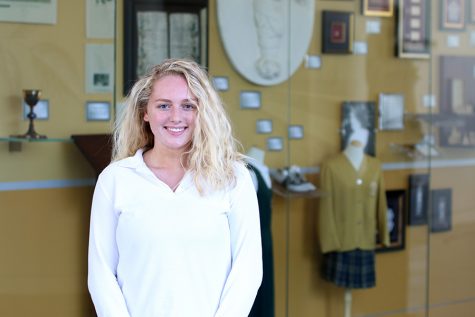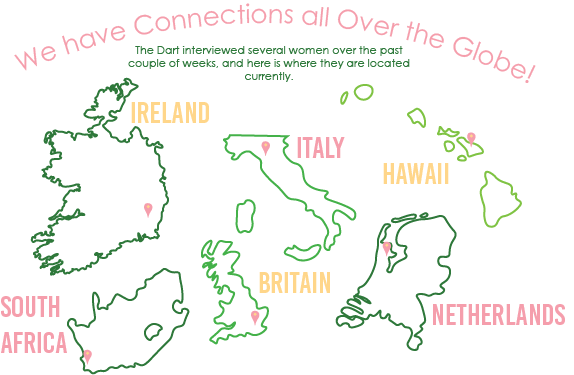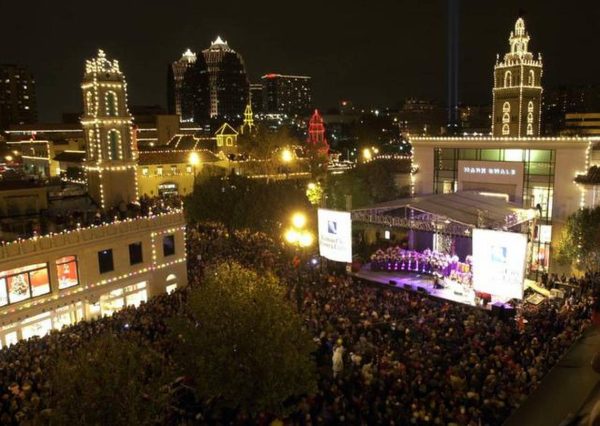Selling memories: Kansas City gentrification hits the antiques
In the past 20 years, the antiques business in Kansas City has seen a push to embrace the old. Denese Caulkins of River Market Antiques shares her story.
October 23, 2017
There’s a feeling a person gets when they walk into an antique mall. It comes from those shelves of ancient books and collectors’ mugs, those 1920s art deco mirrors, those action figures, those smells, those memories. It’s like walking through another person’s experience, sometimes physically in their shoes and socks.
The first time Denese Caulkins cried at her job was when she sold a pair of baby shoes. How could anyone sell their child’s shoes? she thought. “It’s a sad business, because it depends a lot on people dying. But then, it’s really people who don’t have anybody to give [things] to… We always like to think that we’re recycling lives and giving people’s style another shot in life.”
Caulkins, the manager of River Market Antiques, first moved to Kansas City in 1989 from a small town in Iowa, where she found work at a gun manufacturer a floor above an old antique mall. Growing up, her parents would frequent auctions and she remembers buying things second-hand. She was was always intrigued by the store below, and began to stop by after work. When the owner told her the current manager had been stealing money, Caulkins volunteered to review the books and find out what was going on. She did, and she became manager of her first antique mall.
She worked there from 1993 to ‘97 when the building was sold, and then she opened up a booth in a shop on 5th St. Shortly after, she found herself in Springfield, operating a thrift store at a domestic violence organization called The Harmony House, introducing the women to a retail atmosphere and teaching them skills like how to work and dress.
But Caulkins still had that booth in Kansas City, and in 1999 she moved back, applied for the manager position, and has been at 115 W. 5th St. ever since.
In River Market Antiques, booths are rented out to 175 different vendors- artists- who search for valuable items at estate sales, garage sales, auctions and thrift stores that they can then turn around and sell.
“Everybody has their own little vision,” Caulkins said. “Some people just do mid-century. Some people like Victorian. Some just like pottery.”
It’s as much a business for Caulkins as an art form. She’s good with numbers and speaks like a leader, but the art of the business is what’s kept her there for 23 years.
“It’s business, it’s figures, it’s money, but every day is a new adventure,” she said. “All the people that you meet, the artists, the creative people.”
She’s even waited on Taylor Swift, who apparently does not look the same in person, two members of the Rolling Stones and she’s got Kid Rock’s signature hanging on a wall in her office.
She says there’s really no typical client, but she has noticed a dramatic shift in clientele over the past two decades. There’s a revival of the old, a push by twenty-somethings to buy vintage furniture and clothing.
They’re also shifting the definition of “vintage,” itself. “If you’re 25 years old and in here shopping, the 80s is vintage,” Caulkins said.
But it’s a positive shift. Every year, there’s a teacher from the Kansas City Art Institute who brings her freshman class to the mall, allowing them to find items on a budget that they can then turn into their first art project. It’s a shift towards renewed creativity and interest in the past.
“It’s not just about the buying, it’s keeping the past going,” Caulkins said.
She shares stories of a man hiding an engagement ring in something he wanted to show his girlfriend, of McCoy planters and Dorothy Thorpe glasses, of a couple finding a portrait of long lost relatives hanging above the door.
The store supplies the raw materials for the artists. The artists make it art. There’s a man who always comes in to buy old discarded metal and turns them into “the most beautiful sculptures.” Just the other day, there was a model who spent an hour among the clothes racks and emerged with some of the most beautiful outfits Caulkins had ever seen.
As glamorous as it sounds, it’s a lot of work, and a lot of times, you fail. “You just love something, and then six years later, no one’s bought it,” Caulkins said. “I have dealers I see five days a week because they know that if you sell five items, you need to bring five more items in.”
They have to search for an item, bring it home, clean it, research it, price it accordingly, pack it, bring it into the mall, unload it, take it to their booth, arrange it and maintain a fresh display.
“It’s an overwhelming job to keep 175 artistic people happy,” she said. “Because they’re all kind of their own little business within a business, just to keep everybody going on the same level, I’ve often been referred to as ‘The Cat Herder.’”
She’s saddened by the competitiveness of the industry. It all comes down to knowledge of vendors, and who is the most educated. Vendors who are adept at the history of brands can find an item priced for $50 at another vendor’s table, buy it, and sell it for $350, because it’s not just a dresser, it’s a such-and-such such-and-such dresser.
But that’s what’s important about the business. It’s recognizing value in things that would otherwise be forgotten. People come to find old plates like their mothers’, or Star Wars figurines that they played with as little kids. “It’s about buying back memories,” Caulkins said.











Charles Brown • Feb 21, 2021 at 5:35 am
Hello, very cool article. Cool to hear her evolution. I was just wondering what the significance of the word gentrification in the article title means? Thanks in advance